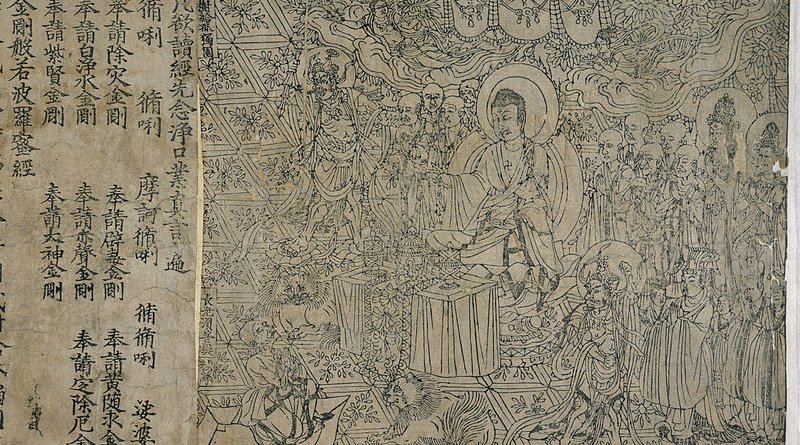From Beijing To Baku: The New Silk Roads For Publishers – OpEd
The worlds earliest surviving book is arguably the Diamond Sutra. Dating from 868 AD, it is a scroll that describes the teachings of the Buddha. Discovered by a monk in a hidden cave near the Chinese city of Dunhuang in 1900, the silk and paper scrolls had been preserved perfectly. It is now housed in the British Library, and as part of the International Dunhuang Project, it is being made available online with 100,000 other manuscripts from across the length and breadth of the Silk Road.
China, as one of the great cultural civilizations of the world, has a long history of profound literary masterpieces and new forms of writing and publishing. Johannes Gutenberg is often hailed as the inventor of the printing press, but 600 years before him Chinese monks were already deploying similar block printing methods to sheets of paper.
But the international publishing market that now dominates in the twenty-first century has largely been defined by Western tastes and styles since the emergence of the English novel between the fifteenth and eighteenth centuries.
But this may be changing. China recently hosted the Beijing International Book Fair (BIBF) – the largest in Asia. A staggering 300,000 people attended the fair, which saw some 2,600 exhibitors from 95 countries showcase their latest titles. The 26th edition of the fair focused on children’s literature, consumer trends, emerging digital formats, publishing technology and increasingly popular genres in China like lifestyle and sci-fi.
Chinese publishing industry was estimated to be worth $55 billion in 2018, a 4.3% growth on 2017. If these numbers are correct, this makes the Chinese book market the largest in the world. Attendees of this year’s fair noted the high levels of enthusiasm for an ever-expanding market for books in the country. This year’s edition saw huge numbers of first-time overseas exhibitors – particularly from the UK and US – keen to start experimenting with new titles.
Its estimated that there are 225,000 bookstores across China. Two of the top 10 largest libraries in the world are in Beijing and Shanghai. The new Binhai Library of Tianjin has gone viral on social media for its awe-inspiring architecture. A more Western-style publishing industry has come of age in China and presents a big opportunity for publishing entrepreneurs.
The underlying factors are strong – the Chinese middle class is expected to be number 600 million people by 2020. That’s about the same population as all of Nigeria or Brazil. Disposable income is growing in China, and the next generation are more inclined to spend on luxuries like books and travel than generations before them.
As the Founder of TEAS Press Publishing House and the Libraff chain of bookstores in Azerbaijan, I see many similarities between the nascent publishing industries of the Caucuses and China. Like in Asia, there is a growing generation of younger and better educated readers eager to spend more time and income on high-quality literature.
There is a greater yearning for young literary talent from the native countries and regions of the readers – and not just from authors from major markets like the UK, US and France. TEAS Press and Libraff have been doing just this by supporting young talent in Azerbaijan, and working with other publishers across the Caucuses region, as well as in Turkey, to expand the deepen markets for literature.
The reading experience of is also not just limited to novels. There is also growing demand for beautifully crafted “coffee table” books replete with stunning photography and innovative designs and layouts. TEAS is already opening more titles in this area, particularly with new titles focused on the history, culture, lifestyle and travel.
The famous Silk Road once linked China directly to Azerbaijan. Its creation was driven as much by cultural exchange as well as commerce, as detailed by Peter Frankopan’s excellent book The Silk Roads. His recent follow-up, The New Silk Roads, charts the new relationships being formed along that ancient trade route today.
And so, it seems after hundreds of years, the cultures that dominated it are witnessing a cultural renaissance of their own. Cultural entrepreneurs should not miss out on this opportunity.
*Tale Heydarov is a leading Azerbaijani businessman, passionate about sport, education and culture. He has helped to promote education and literacy in Azerbaijan, while increasing knowledge of the country’s history and culture abroad. @HeydarovTale

